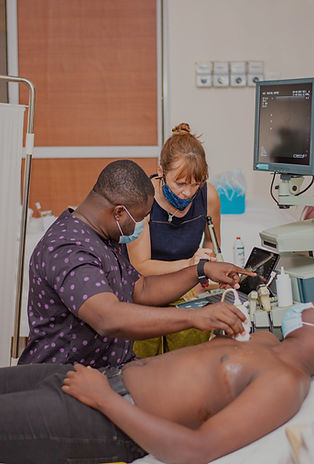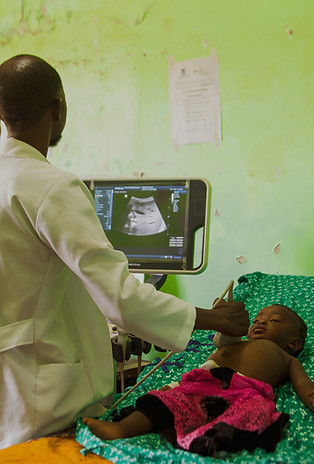Accurate diagnosis can be the difference between good and poor outcomes or even between life and death.

To this day, the majority of people in the world are still unable to access tests, such as pregnancy scans, X-rays for chest infections or CT scans after major accidents and in cancer treatment.
Several factors contribute to this crisis. Limited awareness about how diagnostic imaging can improve patient outcomes leads to a lack of priority and investment. Poorly funded health systems mean many countries can’t afford high-cost imaging equipment or the training of imaging professionals.
Where budget is available, equipment and experts are concentrated in urban centres leaving rural communities bereft of support. There is also a shortage of research into how imaging can best be applied in low and middle income settings where disease patterns and solutions are different.

Imaging for All
This lack of access to diagnostic tests for the world's poorest populations has been highlighted in the Lancet Commission on Diagnostics Report in 2021 and subsequently recognised as a priority area of need in the 2023 World Health Assembly Resolution on Diagnostics. It is an important barrier to achieving the WHO goal of Universal Health Coverage and Health for All.
Our increasingly digitised and interconnected world has opened up real opportunities to build collaborations between health workers in underserved communities and those who can share their capacity. At the same time, technological advances are improving equipment availability, suitability and reducing cost.
Now is the time to push for real change: we need basic imaging tests for all, to achieve sustainable development goals and health for all.

Education and training
We believe that education is a key component of sustainable change and capacity enhancement. Our efforts are rooted in collaborative partnerships, focusing on all facets of imaging education.
Our educational initiatives cater not only to professionals directly involved in diagnostic imaging, like X-ray technicians and radiologists, but also extend to a broader range of health workers who often need to conduct or interpret imaging tests in the absence of specialised radiological support.
We are also dedicated to enriching the knowledge base of our volunteers, as they align their contributions to the specific needs and resources of the partner institutions we work with.
Clinical service support
Many hospitals have a shortage of staff able to perform and report the imaging tests that their patients need. Supporting such hospitals with longer-term, on-site volunteers is an important way of creating sustainable collaborations for the future.
At the same time it provides the much needed experience for imaging professionals interested in Global Health Radiology, to gain a better understanding of local needs, challenges, diseases and the role of imaging in a setting so very different to their own.
We aim to support well-planned and appropriate volunteering opportunities, led by the needs of our partners.


Research and advocacy
Diseases and how they present, as well as patient circumstances are very different across the world. An imaging test which is useful in one setting, may not be so in another.
For many countries and regions and for many diseases there is little good quality evidence related to the role of imaging and there is a great need for more research in this area.
Through existing links with UK research institutions, such as the Liverpool School of Tropical Medicine and the University of Salford, we aim to increase opportunities for imaging research in low and middle income countries.
This includes assessments of the impact of projects supported by our own organisation.
.png)
_edited.jpg)

